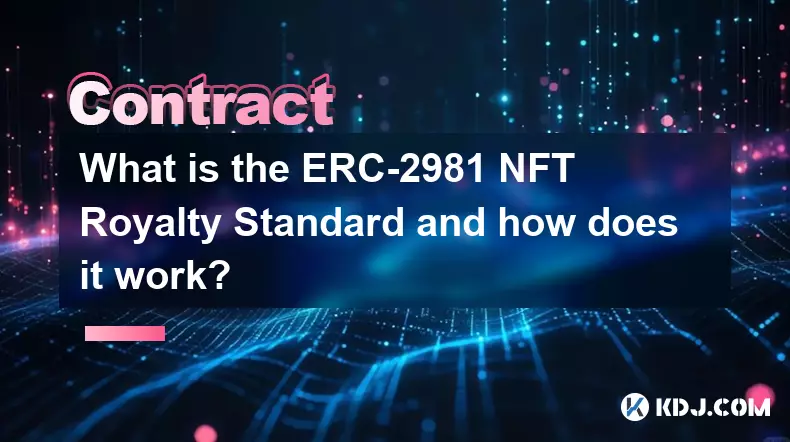-
 bitcoin
bitcoin $95122.959084 USD
-0.06% -
 ethereum
ethereum $3142.532402 USD
-0.28% -
 tether
tether $0.999439 USD
0.01% -
 xrp
xrp $2.209207 USD
-2.80% -
 bnb
bnb $925.395975 USD
0.07% -
 solana
solana $138.662599 USD
-1.73% -
 usd-coin
usd-coin $0.999753 USD
-0.02% -
 tron
tron $0.294100 USD
0.03% -
 dogecoin
dogecoin $0.161321 USD
0.35% -
 cardano
cardano $0.498672 USD
-1.53% -
 hyperliquid
hyperliquid $38.406659 USD
1.34% -
 zcash
zcash $679.663571 USD
5.44% -
 bitcoin-cash
bitcoin-cash $501.381807 USD
3.53% -
 chainlink
chainlink $13.975571 USD
-0.64% -
 unus-sed-leo
unus-sed-leo $9.166130 USD
-0.37%
How does a smart contract's constructor work and when is it executed?
A smart contract's constructor initializes key variables and settings only once during deployment, ensuring secure, irreversible setup of ownership, supply, or configuration.
Nov 13, 2025 at 05:19 am

Understanding the Role of a Smart Contract Constructor
1. A smart contract's constructor is a special function that runs only once during the lifecycle of the contract—specifically when the contract is deployed to the blockchain. It is defined using the constructor keyword in Solidity, the most widely used language for Ethereum-based contracts.
2. The primary purpose of the constructor is to initialize state variables and set up essential configurations required for the contract’s operation. This includes assigning initial values to variables, setting ownership roles, or configuring access control mechanisms.
3. Unlike regular functions, the constructor cannot be called again after deployment. Once the contract is live on the network, the constructor code becomes inaccessible, ensuring that initialization logic executes exactly one time.
4. If no constructor is explicitly defined, the compiler automatically generates a default one with no parameters and no logic. This allows the contract to be deployed without errors, though it won’t perform any custom setup.
5. Constructors can accept arguments, which are passed during deployment. These inputs allow developers to customize the initial state based on deployment conditions, such as specifying an admin address or defining token supply in ERC-20 contracts.
Execution Context of the Constructor
1. The constructor is executed at the moment the transaction creating the contract is processed by the network. This occurs when a deployment transaction is broadcast and included in a block.
2. During execution, the Ethereum Virtual Machine (EVM) allocates storage space, applies the initialization logic, and finalizes the contract’s bytecode on-chain. The resulting contract address is deterministically derived from the creator’s address and nonce.
3. Gas fees associated with the constructor are part of the total deployment cost. Complex initialization routines increase gas consumption, making efficient coding practices crucial for minimizing expenses.
4. Any revert inside the constructor—such as due to failed assertions or require statements—causes the entire deployment to fail. No contract is created, and the transaction is reverted, preserving network consistency.
5. Because the constructor runs before the contract is fully live, external calls to other contracts or sending Ether to the contract within the constructor must be handled carefully to avoid edge cases like reentrancy or insufficient balance issues.
Data Initialization and Security Implications
1. Proper use of the constructor ensures that critical data fields are set correctly from the start. For example, in decentralized exchanges, fee rates or whitelist statuses may be locked in during construction.
2. Misconfiguring constructor parameters can lead to irreversible consequences. Deploying a token contract with an incorrect total supply or assigning ownership to a wrong address results in permanent issues unless upgradeability patterns are implemented.
3. Immutable contracts rely heavily on the constructor since they do not support upgrades. All logic and data must be verified before deployment because no changes can be made afterward.
4. Developers often use libraries like OpenZeppelin to implement secure constructors with built-in checks for common vulnerabilities, including ownership transfer safety and input validation.
5. Using inline assembly or low-level calls within the constructor requires extreme caution. Errors here can corrupt state initialization or introduce exploitable behaviors that persist for the contract’s lifetime.
Frequently Asked Questions
Can a constructor be overloaded in Solidity?Yes, Solidity supports constructor overloading, meaning multiple constructors with different parameter types can be defined. However, only one will be invoked based on the arguments provided during deployment.
Is it possible to upgrade a value set in the constructor?In non-upgradeable contracts, values set in the constructor cannot be changed. In upgradeable contracts using proxies, storage layout permits modifying certain variables, but the original constructor logic remains fixed.
What happens if a constructor consumes too much gas?If the constructor exceeds the block gas limit, the deployment transaction fails. This prevents the contract from being added to the blockchain, requiring optimization of initialization logic.
Can a constructor emit events?Yes, constructors can emit events. This is commonly used to log initialization details such as owner address, timestamp, or configuration settings for off-chain monitoring tools.
Disclaimer:info@kdj.com
The information provided is not trading advice. kdj.com does not assume any responsibility for any investments made based on the information provided in this article. Cryptocurrencies are highly volatile and it is highly recommended that you invest with caution after thorough research!
If you believe that the content used on this website infringes your copyright, please contact us immediately (info@kdj.com) and we will delete it promptly.
- Crypto ETFs: Index Tracking and Market Access for the Savvy Investor
- 2025-11-16 10:05:01
- Wormable npm Packages and Token Stealers: A Deep Dive into Supply Chain Security
- 2025-11-16 10:00:01
- Penny Discontinuation: What It Means for Coin Values and Numismatists
- 2025-11-16 09:55:01
- Penny Discontinuation: Coin Values and the Numismatist's Take
- 2025-11-16 09:50:01
- Crypto's Wild Ride: APEING, BCH, and the Quest for 100x Gains
- 2025-11-16 09:45:02
- Bulls, Volunteers, and Super League: A New Yorker's Take
- 2025-11-16 09:40:01
Related knowledge

What is a Denial of Service (DoS) attack in a smart contract and what are its common forms?
Nov 10,2025 at 05:20am
Understanding Denial of Service in Smart Contracts1. A Denial of Service (DoS) attack in the context of smart contracts refers to a scenario where a m...

What is a cryptographic nonce used for in transaction signing?
Nov 11,2025 at 05:59am
Understanding Cryptographic Nonces in Blockchain Transactions1. A cryptographic nonce is a random or pseudo-random number used only once in the contex...

How does inheritance work in Solidity smart contracts?
Nov 11,2025 at 10:40pm
Inheritance in Solidity: Building Modular Smart Contracts1. Inheritance in Solidity allows one contract to adopt the properties and functions of anoth...

What is the difference between an Externally Owned Account (EOA) and a Contract Account?
Nov 13,2025 at 04:00am
Understanding Externally Owned Accounts (EOA)1. An Externally Owned Account is controlled directly by a private key, which means only the holder of th...

What is the ERC-2981 NFT Royalty Standard and how does it work?
Nov 13,2025 at 05:39am
Understanding the ERC-2981 NFT Royalty Standard1. The ERC-2981 standard is a proposed Ethereum Request for Comment that introduces a royalty mechanism...

What is a sandwich attack in DeFi and how does it exploit transactions?
Nov 15,2025 at 06:39pm
Understanding Sandwich Attacks in Decentralized Finance1. A sandwich attack is a form of front-running and back-running manipulation commonly observed...

What is a Denial of Service (DoS) attack in a smart contract and what are its common forms?
Nov 10,2025 at 05:20am
Understanding Denial of Service in Smart Contracts1. A Denial of Service (DoS) attack in the context of smart contracts refers to a scenario where a m...

What is a cryptographic nonce used for in transaction signing?
Nov 11,2025 at 05:59am
Understanding Cryptographic Nonces in Blockchain Transactions1. A cryptographic nonce is a random or pseudo-random number used only once in the contex...

How does inheritance work in Solidity smart contracts?
Nov 11,2025 at 10:40pm
Inheritance in Solidity: Building Modular Smart Contracts1. Inheritance in Solidity allows one contract to adopt the properties and functions of anoth...

What is the difference between an Externally Owned Account (EOA) and a Contract Account?
Nov 13,2025 at 04:00am
Understanding Externally Owned Accounts (EOA)1. An Externally Owned Account is controlled directly by a private key, which means only the holder of th...

What is the ERC-2981 NFT Royalty Standard and how does it work?
Nov 13,2025 at 05:39am
Understanding the ERC-2981 NFT Royalty Standard1. The ERC-2981 standard is a proposed Ethereum Request for Comment that introduces a royalty mechanism...

What is a sandwich attack in DeFi and how does it exploit transactions?
Nov 15,2025 at 06:39pm
Understanding Sandwich Attacks in Decentralized Finance1. A sandwich attack is a form of front-running and back-running manipulation commonly observed...
See all articles










































































